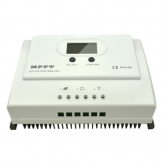Hi, I have another question of my charge controller.. https://www.ebay.com/itm/363022568161
The unit is good for 150VDC max. input and I am on 24VDC system. I know this is a lot of conversion power.
My input voltage is about 120VDC 855W The unit gets quite hot,, enough that i needed to add in a cooling fan.
I am still below the maximum input. I want to add in more solar.
I wish to add 295W extra.. ( so i will have a total of 1,180W ) The controller says it can take 1300w max.
I will plan to change input voltage to about 80vdc, 2s2p configuration. this will give me about 80V input
So will this change decrease the heat ? is it safe?
I still plan to still use the fan for cooling the heatsink.
Any advice on this ? I think i am within my limits. This will be charging 200Ah AGM 24V
Inverter is a hacked UPS APC1400 ( 950W max ) but i'm not maxing it out. Average about less than 200W, but if i work in my shop, i might get to about 300 or 400 watts for like a few hrs. This is just running lights only. for now, til i get my big system up and running..
Still waiting for china deliveries..
The unit is good for 150VDC max. input and I am on 24VDC system. I know this is a lot of conversion power.
My input voltage is about 120VDC 855W The unit gets quite hot,, enough that i needed to add in a cooling fan.
I am still below the maximum input. I want to add in more solar.
I wish to add 295W extra.. ( so i will have a total of 1,180W ) The controller says it can take 1300w max.
I will plan to change input voltage to about 80vdc, 2s2p configuration. this will give me about 80V input
So will this change decrease the heat ? is it safe?
I still plan to still use the fan for cooling the heatsink.
Any advice on this ? I think i am within my limits. This will be charging 200Ah AGM 24V
Inverter is a hacked UPS APC1400 ( 950W max ) but i'm not maxing it out. Average about less than 200W, but if i work in my shop, i might get to about 300 or 400 watts for like a few hrs. This is just running lights only. for now, til i get my big system up and running..
Still waiting for china deliveries..




